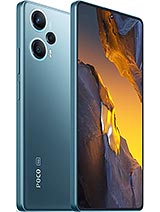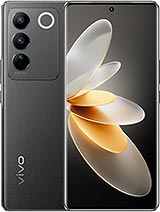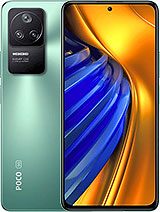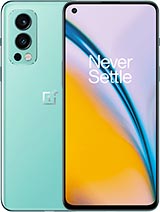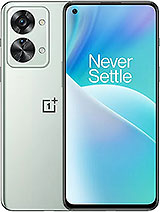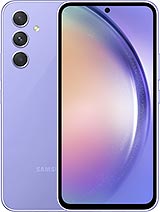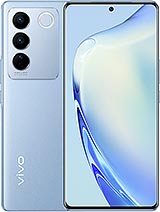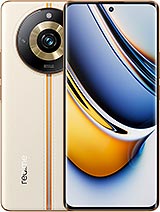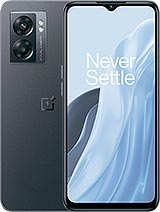OnePlus Nord 3 review

Android 13 with OxygenOS 13.1
The OnePlus Nord 3 boots Android 13 with the latest OxygenOS UI v.13.1, which is mostly identical to the Realme's UI 4.0, and Oppo's ColorOS (the base of all BBK launchers). Don't expect to see much of the Android 13, as usual. Still, the battery optimizations, the media controls, color customizations, and privacy updates, among other improvements, are implemented in the custom UI version.
OnePlus is promising three generations of OS updates and four years of security updates on the Nord 3. Furthermore, the phone has passed TÜV SÜD 48-Month Fluency test with an A-rating, which means the Nord 3 should be as fluid as on day 1 for a 4-year period.

OxygenOS 13.1 is a small update over version 13 from the OnePlus 11 phones - it expands the Omoji library, adds new Health features like Zen Space app, O-Relax app and two dedicated Zen relaxation modes (Deep Zen and Light Zen). There are some new features in the Game Assistant - Championship mode, and music playback control.
OxygenOS 13 looks quite moder and it has a familiar theme also available across Oppo and Realme phones. Android 13's Media Controls are present, along with smoother animations, and refined notification and control centers also come as part of OxygenOS 13.
The OxygenOS has exclusive OnePlus clock widgets with the signature red color.


Exclusive OnePlus clock widgets
The Nord 3 supports fingerprint unlock, and the optical under-display scanner works great - it's fast as they come. You can also set up face unlock for an even speedier unlock - though this is not as secure.

Always-on screen is available, and it can show the usual content - clock, date, notifications icons, and battery, but you can opt out of some of the information. The AOD supports various themes, clocks, and even custom patterns to draw. The AOD also supports Spotify media controls, too.
The AOD can be power-saving (hide after a short motionless period), scheduled, or always on.
And while we are talking about personalization, OxygenOS 13 is flexible when it comes to this. There is an entire Style (and Wallpapers) page in Settings. You can change wallpapers (live and static), switch to different icon packs, different quick toggles icon shapes, change fonts, and choose completely different colors that will change the entire Oxygen look. Different AOD themes and fingerprint scanner animations are available, too. You can even turn on/off Edge Lighting, which is independent of the Always-On Display.
The launcher has no-nonsense homescreens, a simplistic and clean notification/toggles area, and an easy-to-use task switcher. An App drawer is available, too, and it is as clutter-free as one could hope for. You can opt out of the app drawer if you prefer.
The new launcher adds support for Large Folders. Any folder can be enlarged or shrunk.
Dark Mode is available, too, in three different dark versions.
There are many powerful tools within the settings menu if you want full control over your Android OS.
You can also minimize an app to a floating window, now called a flexible window, because it's super easy to resize it on the go. You can exchange files between the full-screen and flexible apps by drag and drop.
Flexible windows are available within the Task Switcher or the Sidebar. If an app is compatible, you can do either of these or use the familiar Split Screen.




Task Manager • Split screen • Flexible window • Flexible window
And speaking about the Sidebar, it's quite familiar - a small visible mark on the edge of the screen that expands into a menu anytime you swipe on it. You can customize the actions for this menu and the app shortcuts that appear there.
Unlike on Realme phones, OnePlus's Smart Sidebar does not offer background streaming.
The OnePlus Nord 3 also supports the RAM Expansion feature. As evident from the name, this feature lets you expand your smartphone's RAM - albeit virtually - by using the phone's internal storage. You can add from 4GB up to 12GB virtual RAM. This feature is active by default, and OnePlus has chosen 4GB for the default setting.
The Photos app is the only multimedia app provided by OnePlus and it supports videos, too. For everything else you rely on Google's.
OnePlus also offers its own File Manager app in addition to Google's Files. There are also IR Remote and (1+) Community apps.




Photos • File Manager • IR Remote • Community
OxygenOS also includes the Zen Space app to help you focus without the phone distracting you by simply preventing you from using it. There are a few predefined modes such as Deep Zen, Light Zen, Work, Study, but you can make your own thing, too.
There's also the O Relax app, which includes a variety of comforting music tracks and ambient nature sounds to relax.






Zen Space • Zen Space • Zen Space • Zen Space • O Relax • O Relax
The interface is clutter-free and easy to use, and it feels great when working with 120fps. Yet, it retains plenty of powerful tools should you choose to dig deeper and use them.
Performance and benchmarks
The OnePlus Nord 3 uses a flagship Dimensity 9000 4nm chipset, the same one inside the OnePlus Find N2 Flip. The CPU configuration includes one ARM Cortex-X2 core running at up to 3.05 GHz, three Cortex-A710 ones clocked at up to 2.85 GHz and four Cortex-A510 cores at up to 1.8 GHz.
These are paired with a 10-core Mali-G710 MC10 GPU, clocked at 850 MHz.
The Nord 3 also comes with either 128GB or 256GB of UFS3.1 storage and either 8GB or 16GB of LPDDR5 RAM.
And now, it's time to run some tests!

As usual we start with Geekbench, the most popular CPU benchmark. The Nord 3 and its Dimensity 9000 chipset posted competitive scores here in both the single- and multi-core tests.
The onscreen GPU tests are somewhat unimpressive as the Nord 3 has (1) higher resolution than 1080p and (2) it doesn't support high frame rate gaming/benching unless a specific developer/OnePlus partnership occurs.
On the other hand, the GPU inside the Dimensity 9000 chip packs impressive raw power as evident by the offscreen tests. The 10-core Mali-G710 is the best GPU in this class, easily beating all other phones and crossing the flagship-grade border effortlessly.
Finally, the AnTuTu compound test puts the Nord 3 among the best scoring phones in its price bracket.
The Nord 3 has flagship-grade hardware and that's obvious from all benchmarks we've ran so far. It can easily handle whatever the task and game, but it could have been even better if high frame rate gaming was an option.
Before we wrap this up, let's look at some stress tests. The OnePlus Nord 3 aced the CPU Throttling Test - it posted 80% stability, which is an excellent mark. And we should note that this test was done in a relatively hot room as it's the summer season round here.
The 3D Mark stress test was rather unimpressive - the Nord 3 kept its full performance for 10 minutes before it dropped down to 55.4% and stayed throttled for the rest of the test.
The Nord 3 features an improved passive cooling system according to OnePlus, but since the phone also got a significant hardware upgrade, it's only natural we see worsened stress test performance. Still, for most purposes, gaming included, we saw no actual throttling happening and the phone always ran fast and smooth.
Reader comments
- Firoz sk
- 17 Sep 2024
- Cb8
I am using the phone but afraid to take oneplus because of green line don't know why day by day trust in oneplus is losing.
- JustJr
- 28 Jun 2024
- PTI
OnePlus, don't be shy. Just use the Dimensity 8200 instead, and improve the camera setup. Xiaomi 13T is still better than this specs-wise, and it's still cheaper. Formerly the 13T, now the 13T Pro is still a "flagship killer"...
- Tom Orange
- 13 Jun 2024
- TqQ
Did they add EIS for 4k video recording yet or is it still lacking that important feature?





































